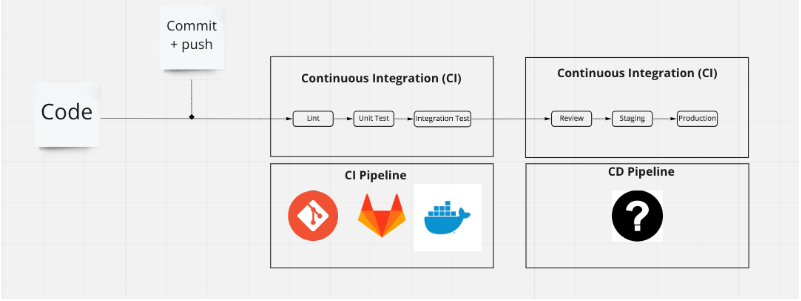Software bugs are more than just minor inconveniences; they can lead to significant financial losses and damage to a company’s reputation. In 2022, software quality issues were estimated to cost the U.S. economy a staggering $2.41 trillion. To mitigate these risks, efficient bug hunting is essential. Here are 15 productivity hacks to enhance your bug detection and resolution processes.
1. Implement Automated Testing Tools

Automated testing tools can significantly reduce the time and effort required for bug detection. By automating repetitive testing tasks, developers can focus on more complex issues. Tools like Selenium and JUnit allow for continuous integration and testing, ensuring that new code changes do not introduce new bugs. According to a survey, 78% of development teams now use automated testing tools to catch bugs before deployment.
2. Adopt Continuous Integration/Continuous Deployment (CI/CD) Practices

CI/CD practices enable developers to integrate code changes more frequently and deploy them rapidly. This approach allows for immediate testing and identification of bugs, reducing the time between writing code and detecting issues. A report indicates that 65% of development teams have adopted CI/CD practices, leading to more efficient bug detection and resolution.
3. Utilize Fuzz Testing Techniques
Fuzz testing involves providing random, unexpected inputs to a program to identify vulnerabilities. This technique can uncover hidden bugs that traditional testing methods might miss. Tools like American Fuzzy Lop (AFL) and Microsoft’s OneFuzz have been instrumental in detecting critical security flaws.
4. Leverage Differential Testing

Differential testing, also known as back-to-back testing, involves comparing the outputs of different implementations of the same functionality. By providing the same input to multiple versions and observing discrepancies, developers can identify semantic or logic bugs. This method has been successfully applied in various domains, including SSL/TLS implementations and C compilers.
5. Prioritize User Interface (UI) Testing

User interface issues are among the most common bugs encountered by users. A study found that 58% of users report UI issues as the most frequent type of bug. Ensuring that the UI is intuitive and free from glitches can significantly enhance user satisfaction and reduce abandonment rates.
6. Establish a Robust Bug Triage Process

Implementing a structured bug triage process helps in prioritizing and addressing bugs based on their severity and impact. Regular triage meetings involving developers, testers, and stakeholders can ensure that critical issues are resolved promptly, improving overall software quality.
7. Encourage Detailed Bug Reporting

Comprehensive bug reports that include steps to reproduce, expected vs. actual results, and relevant logs can expedite the debugging process. A survey revealed that 41% of developers find reproducing the bug to be the biggest barrier to fixing issues faster. Encouraging detailed reporting can mitigate this challenge.
8. Integrate Static Code Analysis

Static code analysis tools examine code without executing it, identifying potential vulnerabilities and coding errors early in the development cycle. Tools like SonarQube and ESLint can detect issues that might lead to bugs, allowing developers to address them proactively.
9. Conduct Regular Code Reviews
Peer code reviews can uncover issues that automated tools might miss. Collaborative reviews foster knowledge sharing and can lead to the identification of subtle bugs, enhancing code quality and team cohesion.
10. Monitor Production Environments
Implementing real-time monitoring in production environments can help detect and address issues that only manifest under specific conditions. Tools like New Relic and Dynatrace provide insights into application performance and user behavior, aiding in the identification of elusive bugs.
11. Utilize AI and Machine Learning for Bug Detection
Artificial intelligence and machine learning can predict potential bugs by analyzing code patterns and historical data. Tools like DeepCode and CodeGuru offer intelligent insights, helping developers prioritize and address issues more efficiently.
12. Implement Time Travel Debugging
Time travel debugging allows developers to record a program’s execution and replay it to identify the root cause of bugs. This technique is particularly useful for intermittent or complex issues, providing a detailed view of the program’s state at various points in time.
13. Address Technical Debt Promptly
Accumulated technical debt can lead to increased bugs and maintenance challenges. A report estimated that technical debt in the U.S. reached approximately $1.52 trillion in 2022. Regularly refactoring code and addressing technical debt can prevent future issues and improve software maintainability.
14. Foster a Culture of Quality Assurance
Promoting a culture that values quality assurance encourages team members to prioritize testing and bug detection. Providing training and resources for QA practices can lead to more proactive identification and resolution of issues.
15. Stay Updated with Emerging Tools and Practices

The field of software development is continually evolving, with new tools and methodologies emerging regularly. Staying informed about the latest advancements in bug detection and testing can provide teams with more effective strategies and tools to enhance their bug hunting processes.
By implementing these productivity hacks, development teams can enhance their bug detection and resolution processes, leading to more reliable and robust software products.

